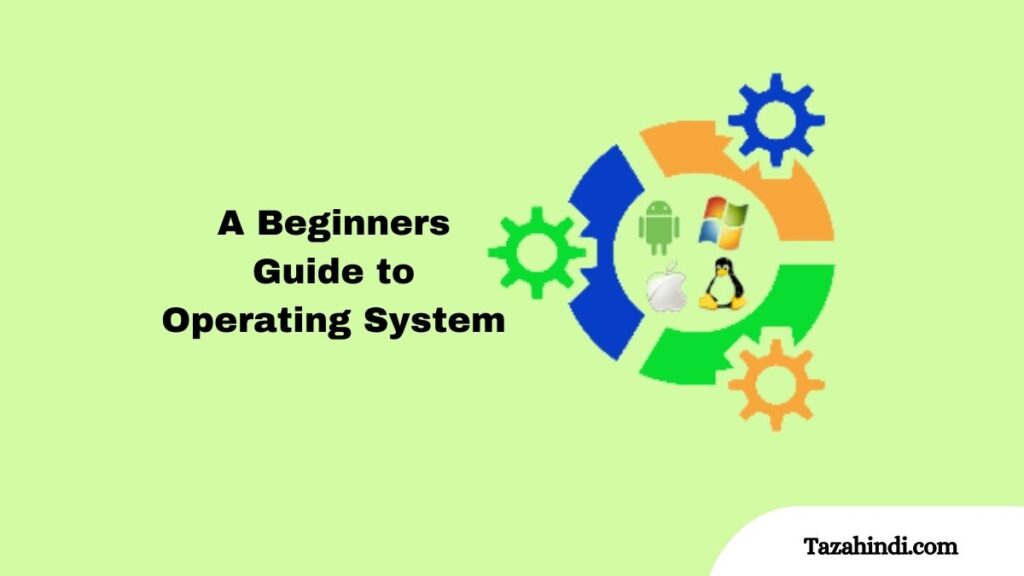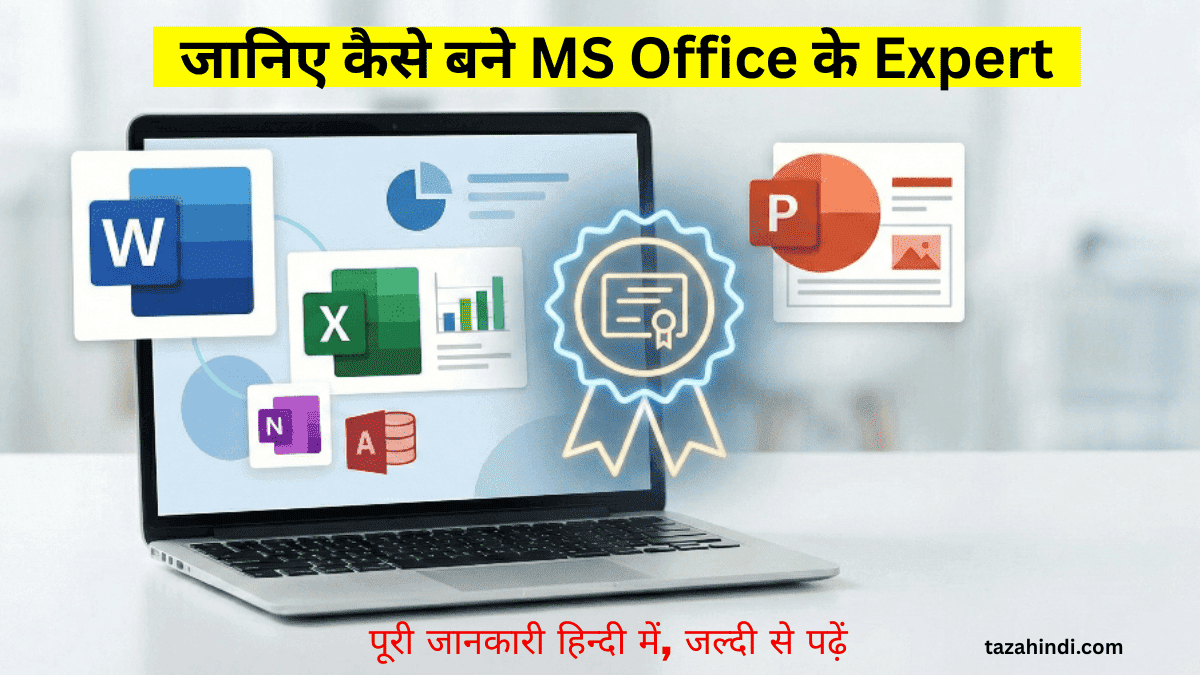A Beginners Guide to Operating System: An operating system (OS) is a software that manages computer hardware and software resources and provides common services for computer programs. It is the foundation on which all computer programs and applications run. Operating systems come in many types and versions, but they all serve the same purpose. In this article, we’ll explore the basics of operating systems to help beginners understand what they are and how they work.

What is an Operating System?
Operating system is a set of programs that manages and coordinates the different hardware and software resources. It acts as a bridge between the hardware and the user, allowing users to interact with the computer’s hardware and software. The operating system manages computer resources such as the processor, memory, input/output devices, and storage devices. It also provides security, file management, and networking capabilities. Examples of operating systems include Windows, MacOS, Linux, Unix, and Android.
Why we need an Operating System ?
Operating system is a critical piece of software that serves as the foundation for managing computer hardware and software resources. It is an essential component of modern computing that provides a platform for running applications, managing files and folders, controlling input and output devices, and communicating with other computers on a network.
Without an operating system, computers would be unable to function effectively. An operating system provides a layer of abstraction between the hardware and software, enabling the computer to run multiple programs simultaneously and ensuring that each program gets the necessary resources it needs to run efficiently.
Moreover, operating systems provide a user-friendly interface that allows users to interact with the computer, perform various tasks, and manage their files and folders with ease. They also provide essential security features such as user authentication, data encryption, and virus protection, which help protect the computer and its data from unauthorized access and malicious attacks.
Overall, operating systems are essential for running modern computers and ensuring that they function efficiently, securely, and effectively. They are a fundamental component of computing that has revolutionized the way we work, communicate, and interact with each other.
Read More: To read latest information about all Sarkari Yojana and Schemes, you may visit our website from Here.
Functions of an Operating System ?
There are a number of functions are available in an Operating System. Out of which, some of the main functions of an operating system are:
- Process management: The OS manages the execution of programs or processes on the computer. It allocates resources such as memory, CPU time, and input/output devices to running programs.
- Memory management: The OS manages the computer’s memory, allocating and deallocating memory space as required by programs. It also handles virtual memory, which allows programs to use more memory than physically available on the computer.
- File management: The OS provides a way to organize and store files on the computer’s storage devices. It manages access to files, maintains file security, and controls file sharing among different users and applications.
- Resource Management: The operating system manages the computer’s hardware resources, including the processor, memory, input/output devices, and storage devices. It allocates resources to various programs and ensures that they are used efficiently.
- User Interface: The operating system provides a user interface through which users can interact with the computer. It provides a graphical user interface (GUI) or a command-line interface (CLI) that allows users to execute commands and run programs.
- Security: The operating system provides security features such as user authentication, file permissions, and encryption to protect the computer from unauthorized access and malware attacks.
Types of Operating System ?
There are several types of operating systems (OS) based on their architecture, functionality, and application areas. Most common type of Operating Systems are:
- Batch Operating System: This type of operating system is designed to execute a series of jobs in batch mode without user intervention. Examples include IBM OS/360 and CMS.
- Time-Sharing Operating System: This type of operating system allows multiple users to access the computer simultaneously. Each user gets a small time slice to execute their commands. Examples include Unix and Linux.
- Real-Time Operating System: This type of operating system is designed to handle real-time applications such as control systems, robotics, and aerospace systems. Examples include VxWorks and QNX.
- Distributed Operating System: A distributed OS is used in networks where multiple computers work together to achieve a common goal. These systems are typically used in cloud computing, where multiple servers are used to manage data and applications.
- Network Operating System: This type of OS is used to manage and operate network resources such as servers, routers, and switches. They provide features such as file sharing, printer sharing, and security.
- Mobile Operating System: These OSes are used on mobile devices such as smartphones and tablets. They are designed to provide a user-friendly interface, efficient battery usage, and fast processing.
- Embedded Operating System: An embedded OS is used in small devices with limited resources such as digital cameras, routers, and sensors. They are designed to operate with minimal user intervention and require low power consumption.
Common Examples of Operating Systems:
Operating systems are software programs that enable computers and other devices to function. Here are some of the most common examples of operating systems used in modern computing:
- Microsoft Windows: Microsoft Windows is the most widely used operating system in the world, with over 1 billion active users. It is used in personal computers, laptops, tablets, and other devices. Windows is known for its user-friendly interface and compatibility with a wide range of software applications. Windows comes in different versions such as Windows 10, Windows 8, and Windows 7, each with its own unique features.
- macOS: It is an operating system developed by the Apple Inc. and used in Apple’s desktop and laptop computers. It is known for its sleek design and intuitive user interface. macOS is highly compatible with Apple’s software applications and is popular among creative professionals such as designers and musicians.
- Linux: Linux is a free and open-source operating system that is highly customizable and can be modified to suit different needs. It is widely used in servers, supercomputers, and embedded devices. Linux comes in different versions or distributions such as Ubuntu, Debian, and Fedora, each with its own unique features and functionalities.
- Android: Android is an operating system developed by Google and used in smartphones, tablets, and other mobile devices. It is known for its flexibility, customizability, and integration with Google services. Android is highly popular among users who prefer a wider range of choices in terms of hardware and software.
- iOS: iOS is an operating system developed by Apple Inc. and used in Apple’s mobile devices such as iPhones and iPads. It is known for its smooth performance, security features, and seamless integration with Apple’s software and services.
- Chrome OS: Chrome OS is an operating system developed by Google and used in Chromebooks, which are lightweight laptops that run primarily on web-based applications. It is designed for users who primarily use their devices for web browsing and online activities.
Conclusion:
Operating systems are essential components of modern computing. They provide an interface between hardware and software and are responsible for managing resources, running applications, and ensuring system stability and security. As a beginner, understanding the basics of operating systems is crucial in making informed decisions about the type of operating system to use, as well as troubleshooting and optimizing system performance.
By familiarizing yourself with the different types of operating systems, their features, and functionalities, you can choose the one that best suits your needs. It’s also essential to stay up-to-date with the latest developments and security updates to ensure your system is secure and protected from threats.
As you continue to use your computer, you’ll discover more about how your operating system works, how to configure and customize it to your liking, and how to troubleshoot common issues. Remember, operating systems are complex pieces of software that require constant maintenance and optimization, but with the right knowledge and tools, you can keep your system running smoothly and efficiently.
Read Related Post:
- What is Kernel in Operating System in Hindi
- What is Memory Management in Operating System in Hindi
- What is Virtual Memory in Operating System in Hindi
- What is Network Operating System in Hindi
FAQs on Operating System
What is an Operating System ?
An operating system is software that manages computer hardware and software resources and provides a platform for running applications.
Why need an Operating System ?
An operating system is necessary for managing computer resources, running applications, providing a user interface, and ensuring security.
What are some examples of Operating Systems ?
Windows, macOS, Linux, Android, iOS, and Chrome OS.
What is the difference between a 32-bit and 64-bit Operating System ?
A 32-bit operating system can only address up to 4GB of RAM, while a 64-bit operating system can address much more. 64-bit systems are also generally faster and more efficient.
How to choose the right Operating System for your computer ?
The choice of operating system depends on the hardware specifications and the user’s preferences and needs. For example, Windows is often used for gaming and productivity, while macOS is popular among creatives.


